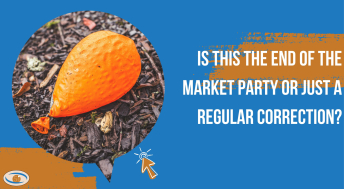This article first appeared in the National Post, May 10, 2014. To see the original as published, click here.
AutoCanada Inc. was the subject of 5i Research Inc.'s first research report after we launched our company in January 2012. It was given a B+ rating and its share price was $6.30. Now it's at about $70 per share making it that rare 10-bagger — that is, a stock that has increased tenfold.
We're not gloating, but it is, of course, great to pick such an investment winner. Many investors, though, might sell such a stock, because it is up. However, there are many points investors need to consider before selling anything, especially a 10-bagger.
Consider the weight of the stock in your portfolio
A stock's portfolio weighting is going to substantially increase when its price rises so much. Depending on your initial position and your other stock holdings, a 10-bagger might represent 10%, 15%, 20% or more of your total portfolio.
Good portfolio management dictates this is when you should sell at least a little bit. You do not want to bet your whole portfolio on one single position. That is not investing; it is gambling.
Decide what weighting you are comfortable with, and sell down to that level. There is no need to sell it all. Obviously something good is going on. Selling for portfolio reasons is the easiest — and best — decision to sell.
Forget — and we mean it — what you paid for the stock
Many investors look back at a stock that has grown to $70, and think: "Not that long ago, it was below $10." You need to stop thinking like this.
For whatever reasons (in AutoCanada's case, it has been great growth and 13 dividend increases in a row), the stock is now much, much higher. That you got it so cheaply is completely irrelevant information today. Earnings are higher, dividends are higher, and the market has done well: It is a whole new environment for the company. Look at it as a new company.
Put yourself in the buyer's shoes
An investor buying AutoCanada today at $70 obviously expects it to keep moving up. What assumptions are these buyers using? Remember that they don’t care that it was once lower. They are buying for future growth.
Recently, for example, AutoCanada indicated that its pipeline of new acquisitions was larger than expected. Last week it announced that eight deals were expected in the short term. A year ago, lower growth was expected. New buyers are buying for new reasons.
Plus, the company’s market cap has changed so much (now $1.5-billion) that a whole new group of investors are looking at it with fresh eyes. You should too, before deciding to exit.
Don't forget the taxman
Generally, we like to consider taxes last in an investment decision. But when you have a huge gain in a taxable account, you are going to pay tax. If you are in the highest tax bracket, selling a winner is going to cost you about 23% in taxes.
Thus, before you sell a winner and replace it with another stock, make darn sure the new investment is 23% better than your 10-bagger. Chances are, it is not.
Ask: What has changed?
Does the company have the same balance sheet? Management? Products? Has anything negative occurred (chances are, no)?
If you liked the company before, and none of the reasons for liking it have changed, why sell the stock just because the company is executing its business plan effectively? Others like it, maybe you still should as well.
The best investors hold on to their winners for decades. Before selling, then, make sure you are not selling a 10-bagger and potentially giving up on a 20-bagger.





Comments
Login to post a comment.
Thanks. Rob.